Symbols in Australian Aboriginal Art
Teresa baker, Minma Marlilu Tjukurrpa (2023)
Introduction
Long before the beginnings of the contemporary desert art movement in Papunya, artists with Aboriginal heritage have expressed themselves through countless styles and mediums, often incorporating traditional iconography.
Today, some Indigenous Australian artists still use iconography in their work that can be traced back thousands of years. The earliest examples of such pictographs can be found in rock art sites throughout Australia. Sometimes the symbols used are related to hunting and gathering histories, people and place. They are also employed in sand and body painting ceremonies, or used to indicate sites of spiritual importance connected to Dreamtime stories and Creation Ancestors.
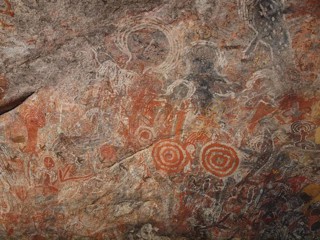
Rock art at Walinynga (Cave Hill) archaeological site. several recognisable symbols are visible, most notably the concentric circles.
source: National Museum of Australia
Aboriginal culture is the oldest continuous culture on earth. Its peoples - like in any other culture - do not possess one homogenous identity. This is attested to by the fact that there are up to 145 Indigenous languages that are currently in use across Australia. Similarly, the meaning of pictographs used in First Peoples’ art is not always consistent. There may be a difference in application or meaning between language groups or families, but there are also different interpretations between individual artists. Additionally, many of the stories depicted in artworks are not meant to be completely understood by uninitiated persons. It's thought that perhaps the dots used in Aboriginal art were originally designed to obscure sacred symbols only for the initiated. Below we have a guide to some of the more common iconogrpahy used in Aboriginal visual story telling.
Damien and Yilpi Marks, My Country (2022)
Wentworth Galleries features artworks by many Aboriginal artists, but holds a large collection of Western and Central Desert works by artists such as Judy Watson Napangardi, Emily Kame Kngwarreye, Janet Golder, Minnie Pwerle, Kudditji Kngwarreye and Damien & Yilpi Marks. When trying to see beyond an artwork’s colour story and their surface level impact on us as a viewer, it is important to consider that only the artist themselves can give us the most complete and accurate understanding of how they meant to use particular imagery in their works. However, gaining an understanding of the meaning of some of the most commonly used symbols can be very enjoyable as it helps us feel more connected to an artwork and therefore to their maker, their creative intentions and their history.
Symbol Interpretations
Most Aboriginal artworks are created in what closely resembles a bird’s eye perspective - viewing and depicting either Country or the heavens in a kind of topographical manner.
Places & spaces

These two symbols can both indicate campsites, meeting places or waterholes.

When a travel between to places is illustrated, paralel lines indicate the movement.

A movement of water from one place to the other, for example through a river.
People & Meetings

The basic symbol for a person (far left) is made by a kind of upturned 'U' shape, which is derived from the shape someone has when setting cross-legged on the ground.
The distinction between a male and female figure is made by the instruments which they carry with them. The middle two illustrations both indicate a man, who has either one or two spears by his side.
In this case, a woman is illustrated as having a digging stick and a coolamon by her side.

It follows that the symbol on the left illustrates a meeting place for men, the one on the right a meeting place for women.

An elder is pictured by two curved stripes or 'U' shapes around each other.
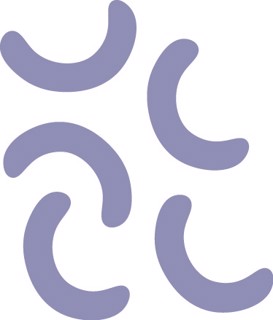
A group of dancing people.
Animals & vegetation
Often, animals are indicated by the shape of the tracks they make with their legs or bodies. When paired with extra continuous or intermittent lines it means the animal is moving.
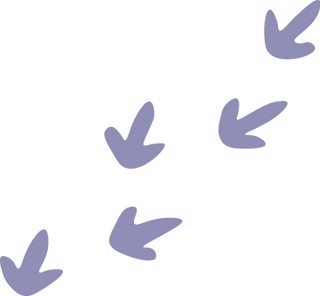
An emu.
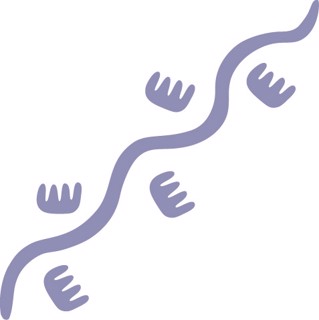
A (moving) possum.
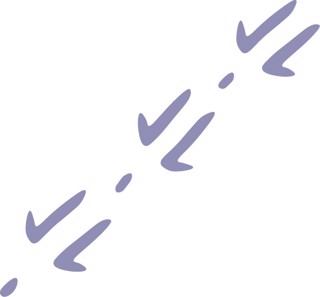
A (moving) kangaroo.

A serpent.
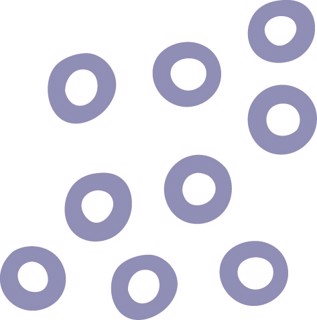
This image can have various different meanings, such as ants, fruits, flowers or eggs.

Another figure that has a variety of meanings depending on the context: waterflow, smoke, lightning or bush fire.

A group of trees.
Weather & Elements
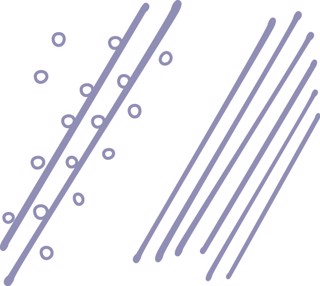
Rain.

A star.


